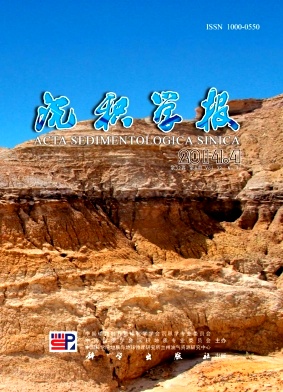Third-order Sequence Filling Feature and Sedimentary Palaeogeography in Late Indosinian for the Middle Yangtze
- Publish Date: 2014-08-10
-
Key words:
- Late Indosinian
Abstract: Late Indosinian is the key transition period in which the middle Yangtze area shifted to the new sedimentary pattern from marine sedimentary environment to continental sedimentation of rivers and lakes. On the basis of information from fundamental stratigraphic sections established in sub-basins in the middle Yangtze, the third-order sequence division and correlation, sedimentary facies analysis and lithofacies palaeogeography recovery were studied through high-resolution outcrop analysis on the guidance of basic theories of continental sequence stratigraphy and sedimentology. It shows that late Indosinian continental sedimentary system in the middle Yangtze is divided into 3 third-order sequences at most but generally 1~2 third-order sequences can be identified only as a result of strata undevelopment or erosion. There are 3, 2, 1 and 1 third-order sequences in the western margin of middle Yangtze, Jingdang Basin, Zigui Basin and Edong Basin, respectively. In contrast, the quantity of sequences in the west area is more than that in the east area. Sedimentary facies analysis indicates that all third-order sequences are characterized by continental clastic sediments which are rich in coal and palaeobotanic fragments, and also shows that the lithofacies paleogeography in the middle Yangtze area is totally made up of 2 types of sedimentary facies sets which are meandering river-delta-residue lake facies set and braided river-delta-residue lake set, and the former which mainly distributes in the west of middle Yangtze and Zigui Basin is dominant, while the latter develops in Edong Basin comparatively. It’s also concluded from study results that the middle Yangtze has a couple of subsidence and sedimentation centers in late Indosinian, and the ones in Jingdang Basin and the western margin of middle Yangtze are most important. The subsidence mechanism is the middle Yangtze crust northward subduction which results in flexural subsidence and intense extrusion deformation. The provenance is probably provided for sub-basins by Qingling-dabie collision and adjacent uplift created by deformation.
| Citation: | Third-order Sequence Filling Feature and Sedimentary Palaeogeography in Late Indosinian for the Middle Yangtze[J]. Acta Sedimentologica Sinica, 2014, 32(4): 724-733. |






 DownLoad:
DownLoad: